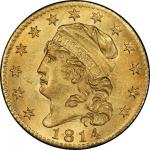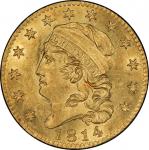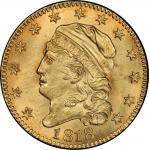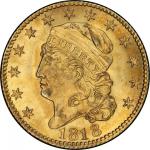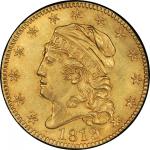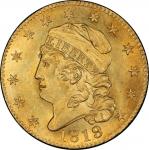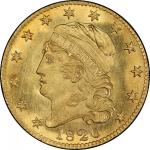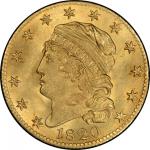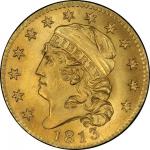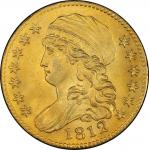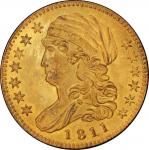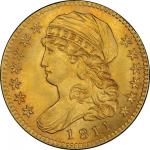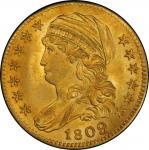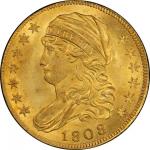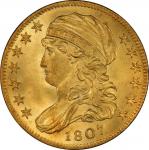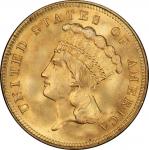“Simply no superlatives adequate: Garrett bidders pull no punches” — Coin World headline, December 12, 1979 Without holding this coin in hand, it would be difficult to conceive of a specimen of this type existing in such incredible quality. From its satiny luster to its luxurious patina, this coin exemplifies the concepts of originality and gem preservation. Both sides exhibit ideal rich yellow gold color, enriched with deeper gold at the obverse periphery and boldly decorated with coppery orange overtones on the reverse. Thick mint frost covers both fields and remarkably well struck devices. The curls of Liberty’s tresses, the roundness of her bust truncation, and denticles around both sides are fully realized. The only localized softness is seen in a small area at the lower left corner of the shield. Light adjustment marks are confined exclusively to the high obverse rim. No marks are consequential enough to merit mention, but two tiny ticks above the eagle’s head may prove useful as identifiers at some point in the future. Struck later than the latest die state known to Bass and Dannreuther, this piece shows a thin crack between the bust tip and the rim beyond on the obverse. Despite the advanced die state, this example is better struck than the retained Bass coin, without the area of weakness that piece shows left of the shield. The obverse is free of clash marks, those impressions having been lapped away in an earlier die state. The light crack connecting the tops of CA of AMERICA to the stop and the base of D in the denomination is present, but so too are further cracks at the tops of MER and light cracks that extend out from either side of the top of I without reaching either adjacent letter. Additional light cracks are seen at the top of the letters of STATES, connecting ST and ES though the cracks from either side of A do not reach far. A faint indication of a die clash is seen above the wing at left, and more significant clashes are buried within the intricacies of the shield. Though Edgar H. Adams listed both varieties of 1813 half eagles in his notebook on early gold die varieties (now preserved by the American Numismatic Society) and William H. Woodin displayed both varieties at the 1914 exhibition of the Society (correctly described in the accompanying publication as “1813. Two slight varieties of reverse”), Walter Breen failed to include this variety in his first monograph on early half eagle die varieties. In his later update to the monograph series, New Varieties of $1, $2.50, and $5.00 United States Gold, Breen wrote: “the other variety claimed by Woodin and Adams has been located,” though examples were likely hiding in plain sight all along. The first Garrett sale, held on November 28 and 29, 1979, attracted nationwide attention, with “record prices up and down the line,” according to a December 16, 1979 New York Times article by Ed Reiter. One lot in the sale, a 1787 Brasher doubloon, set a new world record for most valuable coin that would stand for a decade: $725,000. According to the Times, the total price realized of over $7 million for 611 lots was “an all-time record for a single numismatic auction involving just a single collection.” Q. David Bowers told the press “there had been 61 coins sold for over $25,000, 11 for over $100,000, and one for over $720,000.” Coin World reported that the average lot price of over $11,000 per lot was also a world record. While numbers have changed by an order of magnitude over the course of 35 years, the Garrett name still attracts attention wherever it appears. As befits its fine provenance, the visual appeal is little short of awe-inspiring. No example of the Capped Head, Large Diameter design type has ever been given a higher grade, and only three other specimens of all issues (1813 through 1829) have been certified at the same MS-66+ level by PCGS. Three of those four total coins are included in the present installment of the D. Brent Pogue Collection. The fourth, dated 1829, is also a part of the Pogue Collection and will be offered in a future sale. PCGS# 45648. NGC ID: 25PM.

